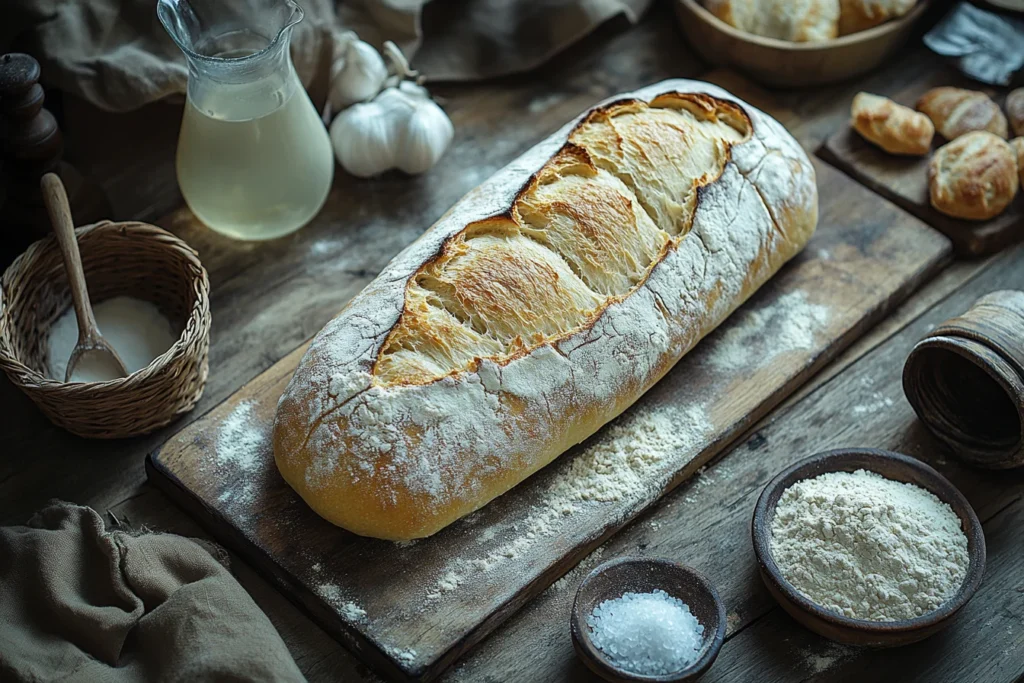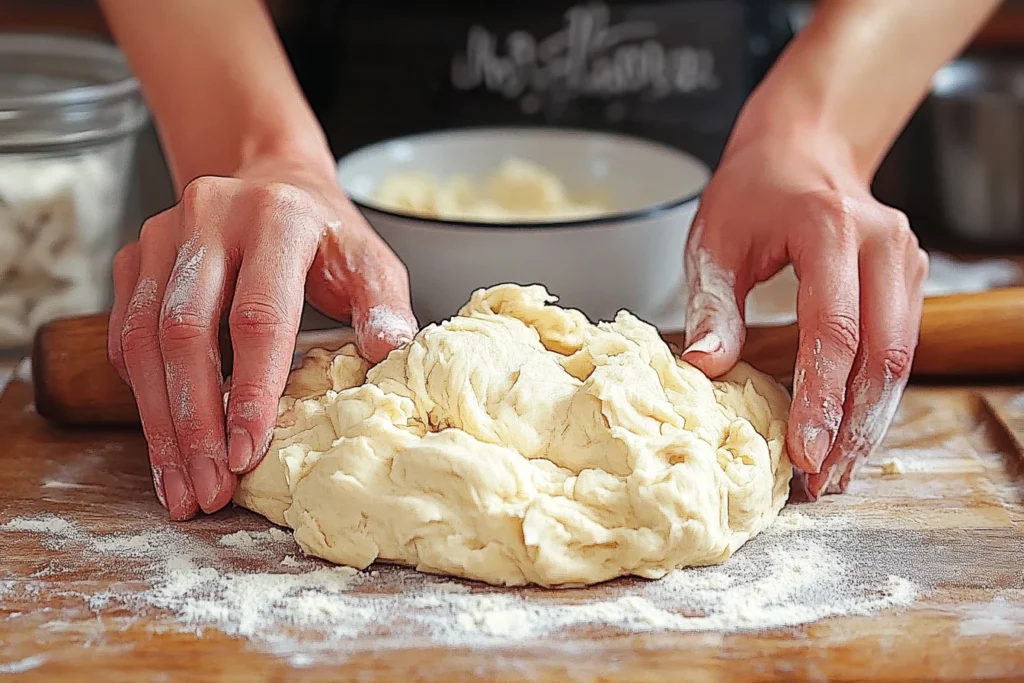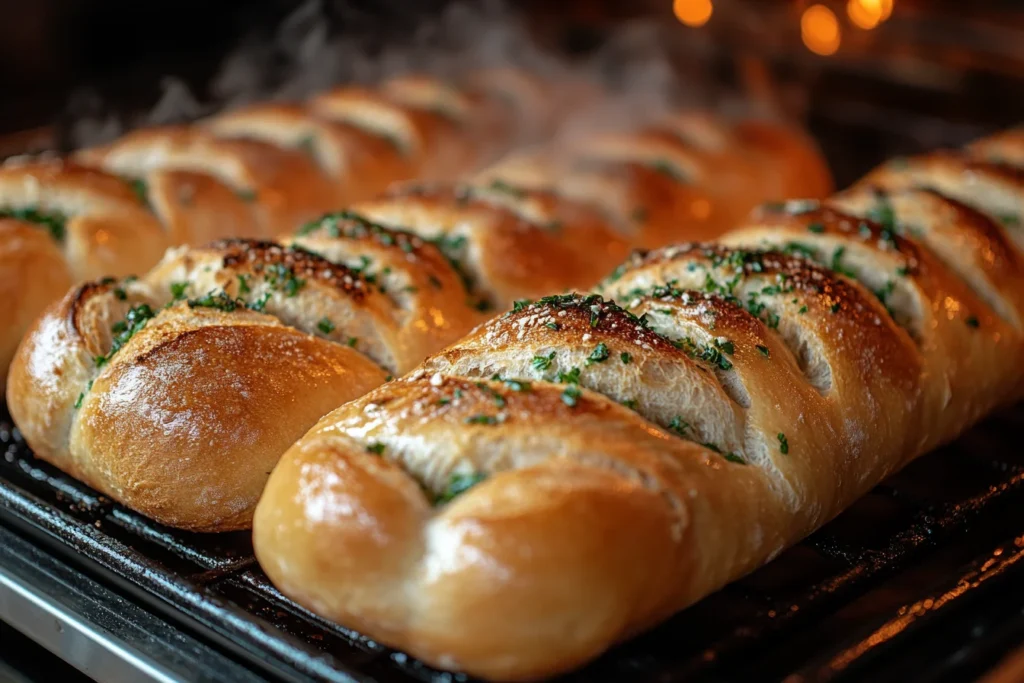European flour recipes have a completely unique way of bringing humans collectively with their rich traditions and unforgettable flavors. Flour, for instance, is a kitchen staple that’s been on the coronary heart of European cooking for centuries. From crusty baguettes in France to delicate Italian pastries, every region has its precise spin on a way to transform flour into magic. Want to strive some thing new? Check out our guide on What Can I Make That Uses a Lot of Flour for concept.
But here’s the thing: European flour is a little different from what you might find on U.S. shelves. Its texture, protein content, and milling techniques give it a distinct character that adds authenticity to classic recipes. Curious about the details? Learn what kind of flour they use in Europe and why it makes such a big difference. If you’ve ever wondered why your homemade croissants don’t taste like the ones from a Parisian bakery, the flour might be the missing piece of the puzzle!
In this blog post, we’ll talk about why European flour is special, how to use it, and share some tried-and-true recipes that let it shine. Whether you’re kneading dough for hearty German bread or whisking batter for a fluffy British sponge cake, you’re in for a treat.
Let’s roll up our sleeves, grab a bag of flour (or two), and whip up some of Europe’s most beloved recipes right in your kitchen.

Table of Contents
Types of European Flour
European flour is the secret to creating authentic breads, pastries, and more. Its texture and protein content vary, giving each type a unique purpose. Here’s a quick guide to some popular European flours.
Type 00 (Italy): This finely milled flour is soft and perfect for pasta, pizza, and pastries. Its low protein content creates smooth, elastic doughs, ideal for delicate Italian dishes.
T55 and T65 (France): T55 is the go-to for baguettes and croissants, offering a light, airy texture. T65 is slightly coarser, ideal for rustic breads like pain de campagne.
Rye Flour (Central and Eastern Europe): Rye is essential for hearty breads like pumpernickel. Light rye blends well with wheat, while dark rye delivers bold, tangy flavors in dense loaves.
Spelt Flour (Germany): An ancient grain with a nutty, slightly sweet flavor. Whole spelt is great for rustic bread, while white spelt works well in cookies and cakes.
Buckwheat Flour (France and Eastern Europe): Naturally gluten-free, this flour is perfect for savory galettes and Russian blinis. Its earthy flavor adds depth to dishes.
Manitoba Flour (Italy): A high-protein “strength flour” used in bread, pizza, and festive treats like panettone, where a strong gluten structure is key.
Graham Flour (Eastern Europe): A coarsely ground whole wheat flour used in hearty bread and dumpling dough.
Essential Baking Techniques
Mastering baking techniques is key to making the most of European flour recipes. While ingredients are vital, the methods used can greatly influence the outcome of your baked goods.
The Importance of Measuring Accurately
In European baking, precision is everything. Use a kitchen scale for exact measurements rather than relying on cups. This is especially true when working with European flours, as their absorption rates may differ from American flours.
Hydration Levels Matter
Different types of European flour require specific hydration levels. For example, rye flour absorbs less water than wheat, so understanding how much liquid to add can make or break a recipe.
Kneading and Folding
For bread recipes, kneading develops gluten, while folding helps incorporate air. These steps are essential for achieving the soft crumb and chewy texture found in many European flour recipes.
Baking with Steam
Many traditional European recipes, such as baguettes, require a steam environment to form a crusty exterior. Adding a pan of water to the oven can replicate this effect.
Iconic European Recipes
Europe’s culinary history is rich with timeless recipes that have been passed down through generations. These dishes often rely on region-specific flours to achieve their signature taste and texture. Incorporating European flour recipes into your baking can bring these iconic creations to life in your own kitchen.
French Baguette
The French baguette is a shining example of how European flour recipes transform simple ingredients into something extraordinary. This classic bread requires French T55 flour, known for its balanced protein content that gives the bread its airy crumb and crispy crust.
Ingredients:
500g French T55 flour
10g salt
7g dry yeast
325ml warm water
Instructions:
Combine the flour, salt, and yeast in a large bowl. Gradually add water and mix until a dough forms.
Knead for 10 minutes until smooth and elastic.
Let the dough rise for 1–2 hours.
Shape into long, thin baguettes and score the tops with a sharp knife.
Bake at 475°F (245°C) with a pan of water in the oven for steam, creating that signature crust.
This recipe is perfect for beginners wanting to try authentic European flour recipes.
German Rye Bread
Dense, flavorful, and hearty, German rye bread showcases the earthy qualities of rye flour. Its robust flavor makes it a favorite for sandwiches or serving alongside soups.
Ingredients:
300g rye flour
200g whole wheat flour
10g salt
10g caraway seeds (optional)
7g dry yeast
350ml warm water
Instructions:
Mix the flours, salt, and caraway seeds in a bowl.
Dissolve yeast in warm water, then combine it with the dry ingredients.
Knead into a sticky dough and let it rise for 2 hours.
Shape into a loaf and bake at 400°F (200°C) for 35–40 minutes.
This classic bread embodies the heart of German baking traditions.
Italian Focaccia
Focaccia is a flavorful flatbread made with Type 00 flour, which gives it a soft, pillowy texture. Topped with olive oil, herbs, and salt, it’s a staple in Italian cuisine.
Ingredients:
500g Type 00 flour
10g salt
7g dry yeast
325ml water
3 tbsp olive oil
Fresh rosemary and coarse salt for topping
Instructions:
Combine flour, salt, and yeast. Gradually add water and olive oil, mixing until a dough forms.
Knead for 10 minutes, then let it rise for 1–2 hours.
Spread the dough onto a baking tray, dimple the surface with your fingers, and drizzle with olive oil.
Sprinkle rosemary and salt over the top.
Bake at 425°F (220°C) for 20–25 minutes.
Focaccia is one of the most versatile European flour recipes, great as a side dish or sandwich base.
Polish Pierogi Dough
Pierogi, or Polish dumplings, are an iconic Eastern European dish. The dough uses all-purpose flour, but European brands give it a more elastic texture for easier rolling and filling.
Ingredients:
500g flour
1 egg
250ml warm water
1 tsp salt
Instructions:
Mix the flour and salt in a bowl. Add the egg and gradually incorporate warm water.
Knead the dough until smooth and elastic.
Let it rest for 30 minutes before rolling it out and cutting into circles.
Fill with savory or sweet fillings, fold into half-moons, and seal the edges.
Boil the pierogi until they float and then pan-fry for added texture, if desired.
This dish highlights the versatility of European flour recipes, from savory to sweet options.
Austrian Strudel
Apple strudel is a delicate dessert that relies on a very thin, stretchy dough made with European flours. The result is a flaky pastry filled with spiced apples and raisins.
Ingredients:
250g all-purpose or spelt flour
1 egg
125ml warm water
1 tbsp oil
A pinch of salt
Instructions:
Mix the flour and salt in a bowl. Add the egg, water, and oil, mixing until a soft dough forms.
Knead for 10 minutes until smooth, then let it rest for 1 hour.
Roll out the dough until paper-thin on a floured surface.
Fill with spiced apple slices and raisins, then roll tightly.
Bake at 375°F (190°C) for 35–40 minutes until golden brown.
Strudel dough showcases the artistry of European flour recipes with its intricate layers and delicate texture.
Spanish Churros
Churros are a sweet treat made from a simple dough using high-protein flour. These fried pastries are crispy on the outside and soft inside, often served with a dusting of sugar or chocolate dipping sauce.
Ingredients:
250g high-protein flour
250ml water
1 tbsp sugar
1/2 tsp salt
Oil for frying
Instructions:
Bring water, sugar, and salt to a boil. Remove from heat and mix in the flour until it forms a dough.
Let it cool slightly, then pipe into hot oil using a star-shaped nozzle.
Fry until golden brown, then roll in sugar.

Sweet Treats from Europe
European desserts hold a special place in baking traditions. These recipes showcase the versatility of European flours, delivering rich flavors and delicate textures.
French Madeleines
These buttery, shell-shaped cakes are a French classic, made with fine pastry flour for their signature tenderness.
Ingredients:
120g pastry flour
120g sugar
2 large eggs
100g melted butter
1 tsp vanilla extract
Instructions:
Whisk the sugar and eggs until pale and frothy.
Fold in the sifted pastry flour and vanilla, then slowly add the melted butter.
Chill the batter for 1 hour before spooning into madeleine molds.
Bake at 375°F (190°C) for 10–12 minutes until golden.
The result is a soft, slightly crisp treat perfect for tea or coffee.
Austrian Sachertorte
This famous chocolate cake uses finely milled all-purpose flour for a rich and dense crumb.
Ingredients:
150g all-purpose flour
120g dark chocolate
120g butter
120g sugar
4 eggs
Instructions:
Melt the chocolate and butter, then mix in the sugar.
Beat in the eggs one at a time, then fold in the flour.
Pour into a springform pan and bake at 350°F (175°C) for 30–35 minutes.
Sachertorte is a decadent addition to any European flour recipes collection.
Gluten-Free Options
Gluten-free baking is easier than ever with European flours like buckwheat, almond, and chestnut flour. These naturally gluten-free options maintain flavor and texture while accommodating dietary needs.
Italian Polenta Cake
Polenta, a type of cornmeal, creates a dense yet moist cake that’s both gluten-free and flavorful.
Ingredients:
200g fine polenta
100g almond flour
200g sugar
3 eggs
150g melted butter
Instructions:
Mix the polenta, almond flour, and sugar in a bowl.
Beat in the eggs and melted butter.
Bake in a greased pan at 350°F (175°C) for 30–35 minutes.
Polenta cake is a staple in gluten-free European flour recipes.
Nutritional Insights
European flours differ from their American counterparts not just in texture but also in nutritional content. Many traditional European flours retain more nutrients due to minimal processing, making them healthier choices for baking.
Spelt Flour: High in protein and fiber, spelt is a great choice for hearty breads and cookies.
Rye Flour: Packed with magnesium and antioxidants, rye flour adds nutritional benefits to your recipes.
Buckwheat Flour: Gluten-free and rich in iron, this flour is ideal for crepes and rustic breads.
Switching to European flours can be a simple way to add nutrients without sacrificing flavor or quality.
Tips for Storing Flour
Proper storage ensures the freshness of your European flours and protects them from spoilage. Follow these tips for long-lasting quality:
Keep It Cool: Store flour in a cool, dry place, ideally below 60°F, to prevent rancidity.
Use Airtight Containers: Transfer flour to airtight containers to keep moisture and pests out.
Freeze for Longevity: If you bake infrequently, freezing your flour can extend its shelf life by months.
Rotate Your Stock: Always use older flour first and label your containers with purchase dates.
By taking these steps, you can keep your European flours fresh and ready for baking at any time.
Common Mistakes in Baking
Even seasoned bakers can encounter pitfalls when working with European flour recipes. Avoid these common errors to achieve better results:
Using the Wrong Flour Type: Selecting the wrong flour can lead to disappointing textures. For instance, using bread flour instead of Type 00 in pizza dough will make it too chewy.
Skipping Resting Times: Many recipes require resting dough to develop gluten properly. Skipping this step can result in dense or uneven baked goods.
Overmixing or Undermixing: Overmixing can beef up the dough, whilst undermixing leaves lumps that have an effect on the feel. Mix till components are simply blended.
Ignoring Oven Temperature Variations: Always use an oven thermometer to make sure accuracy, as small temperature variations can have an effect on consequences.
Avoiding those errors guarantees your European flour recipes flip out as supposed on every occasion

Adapting Traditional Recipes
Adapting traditional European flour recipes for modern-day kitchens may be a laugh and profitable. Here are a few ideas:
Healthier Substitutions: Replace part of the all-purpose flour with whole wheat or spelt for added fiber and nutrients.
Lowering Sugar: Traditional European desserts can be sweet; reduce sugar without compromising taste by adding natural sweeteners like honey or applesauce.
Vegan Alternatives: Substitute eggs with flaxseed meal and use plant-based milk in recipes like strudels or cakes.
Experiment with Gluten-Free Flours: Many traditional recipes can be adapted using buckwheat, almond, or chestnut flours for gluten-free alternatives.
Frequently Asked Questions
What makes European flour unique from American flour?
European flour is commonly milled more finely and often has lower protein content, making it perfect for sensitive baked items like pastries and pizza dough.
Can I replacement European flour with all-cause flour?
Yes, however the consequences may also vary. European flours have particular residences, so using a right away replacement can modify the texture and taste of the very last product.
Are European flours better for gluten-free baking?
Yes, many European flours, like buckwheat or almond flour, are naturally gluten-free and add rich flavor to gluten-free recipes.
Where can I buy European flour?
You can find European flours at specialty grocery stores, online retailers, or imported food shops. Popular brands often carry Type 00, rye, and spelt flours.
Conclusion
European flour recipes offer a blend of way of life, flavor, and flexibility that can raise your baking to new levels. Whether you’re learning French baguettes, growing gluten-loose options, or experimenting with candy treats like Austrian strudel, the right flour and techniques make all of the distinction. By knowledge the specific traits of European flours, warding off common errors, and making use of proper storage pointers, you may bring authentic European flavors into your kitchen.
With a combination of iconic recipes and cutting-edge adaptations, there’s some thing for every baker to revel in. Start exploring European flour recipes today and create delicious consequences that your family and buddies will love!

